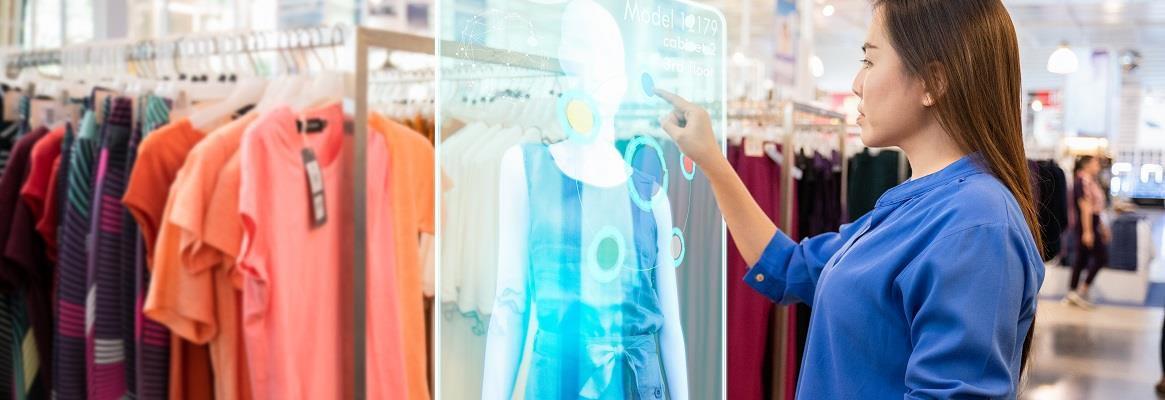Lynda Petherick is the head of Retail UKI at Accenture. With over 20 years of experience in banking and consulting, Lynda has recently started innovation initiatives in the fashion and luxury industry to help clients adapt to evolving retail landscapes.
Changing dynamics for brand collaboration
The retail industry has historically been an extremely competitive marketplace. However, due to the pandemic, companies need to think more about where they collaborate.
Lynda highlights three critical strategies for brands to meet changing consumer demands.
1. Foster meaningful ecosystem connections so that they can operate in a competitive and shifting market as quickly and responsively as possible.
2. Build unlikely partnerships with individuals and organisations from diverse backgrounds, to collaborate on new ideas and innovation, and take them to market on a wider scale.
3. Develop robust and trusting consumer relationships with a renewed sense of brand purpose and the agility to respond to changing consumer behaviours.
Responding to disruption with innovation
COVID-19 has accelerated the need for innovation, with the industry having to adopt digital practices at unprecedented speed.
In 2019, Accenture conducted a search comparing companies who invested in technology to companies who were slower to adopt digital tools.
“What we saw was that those companies that invested in tech adoption and innovation at scale were doubling their revenue growth over and above competition who did not do so. That was 2019 and pre-pandemic. Fast forward to now, companies who invested in technology have that much more of a competitive advantage from what we saw in 2019.”
Adapting with eco-friendly practices in mind
As the Fourth Industrial Revolution is now upon us, new and emerging technologies are revolutionising the way businesses operate. Specifically, changing industry practices while keeping sustainability in mind.
Lynda shared an innovation-led example, DyeCoo’s CO2 technology. This is a 100 per cent water and chemical-free textile processing solution which cultivates raw cotton, significantly reducing the excessive use of water usually required in production. This is just one example of the many innovations which combine the need for change with sustainable practices.
Many of these ideas contribute to the concept of Circular Fashion. In ‘The Circular Economy Handbook’, Accenture explains Circularity as “rethinking and transforming full value chains to create a system in which waste is designed out entirely, with the goal of net positivity.”
The five circular business models, coupled with a collaborative effort between retailers, allow companies to fulfil this vision. Accenture describes these business models as:
1. Circular Inputs - use recycled or renewable materials
2. Product Use Extension - design and create products that are built to last
3. Sharing Platform - share ownership and usage of products
4. Product as a Service - retain ownership and sell usage through a service model
5. Resource Recovery - recover materials through collection and processing
Retailers should make the most of the changing industry during COVID to restructure their businesses. Not only in a way to become more efficient, but also to integrate sustainability into these decisions.
Optimistic for the future of a more sustainable world
Though we are not currently on track to achieve our global sustainability targets, there are still reasons to feel optimistic that we will see change.
In Accenture’s August Consumer Pulse survey, 66 per cent of customers see a need for greater business involvement in improving social and environmental outcomes. It is becoming more and more apparent that consumers will hold companies accountable for maintaining sustainable practices.
On the other hand, businesses are also recognising the importance of reaching these targets. Many brands, including H&M and Timberland, intend to make all products 100 per cent circular by 2030. These ambitious goals are what make Lynda most optimistic for the future of the fashion industry.
“There are brands that we can call out which are absolute examples of how to do this right. We just need a lot more of them. That is when things will really start to change. I have had the opportunity to sit with lots of people across the fashion industry, talking about how much they want to make a difference. So I am positive and optimistic about those things. Ultimately, it depends on what consumers do. Consumers need to make sure they make purchasing decisions that have a lighter touch on our planet.”
This article has not been edited by Fibre2Fashion staff and is re-published with permission from seraitrade.com







Comments